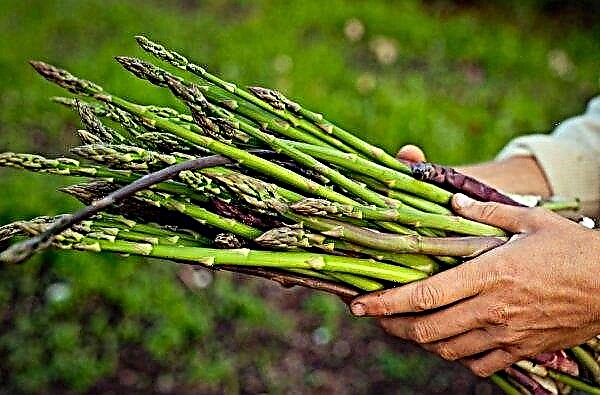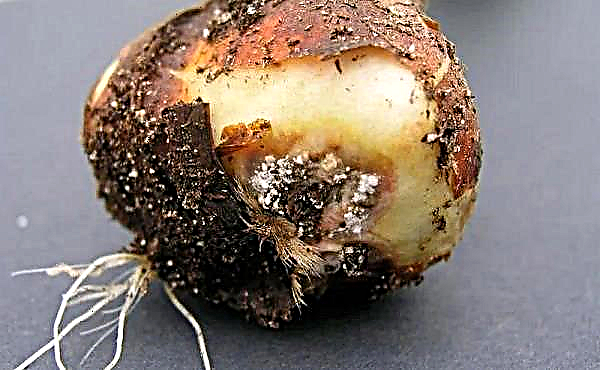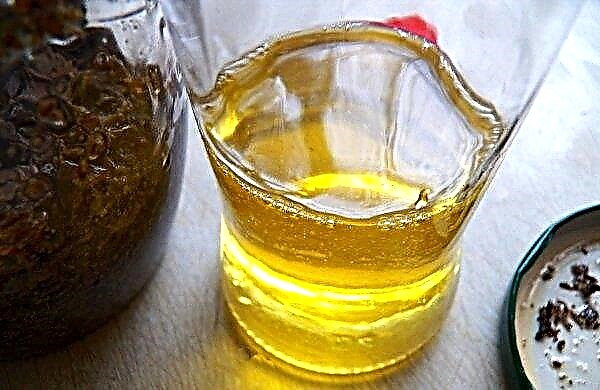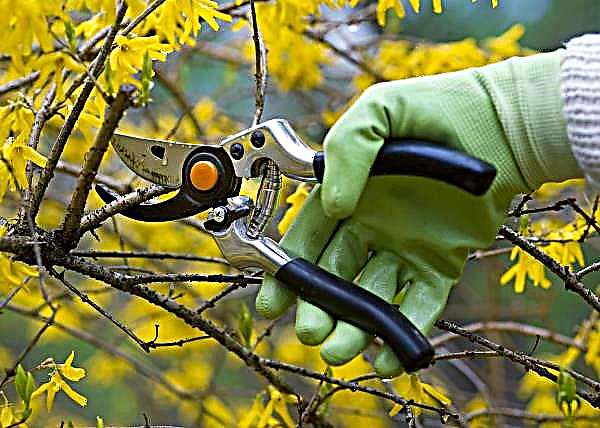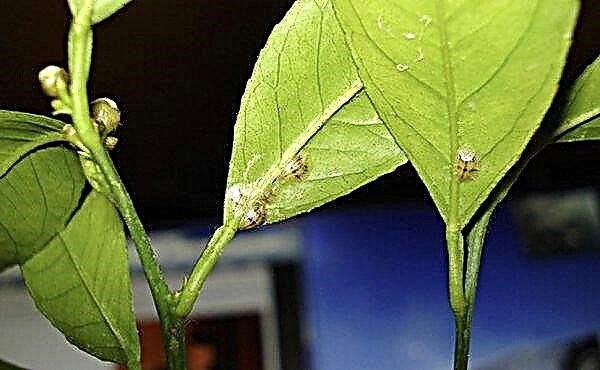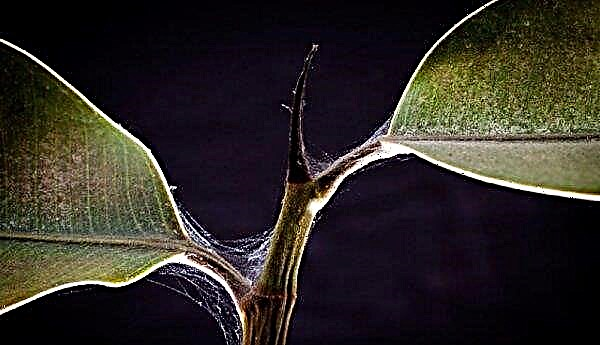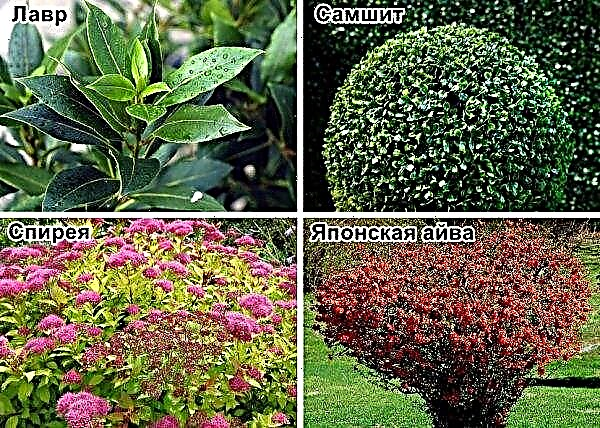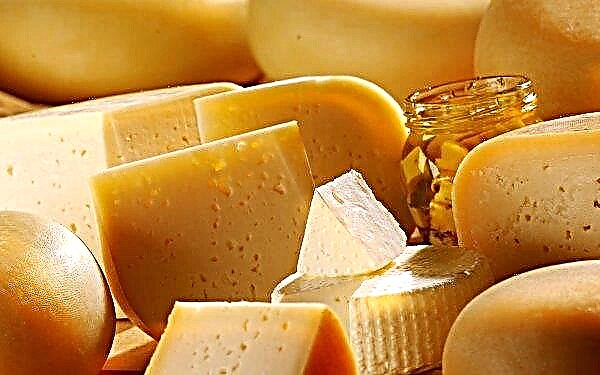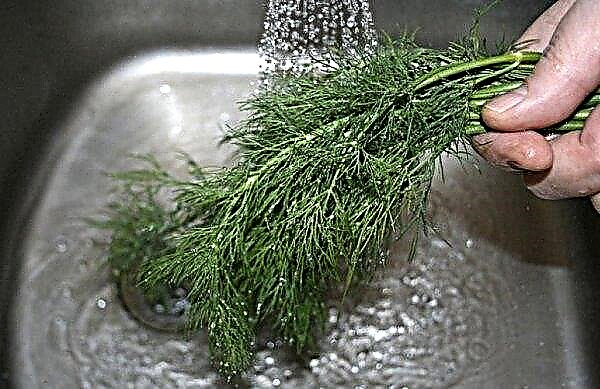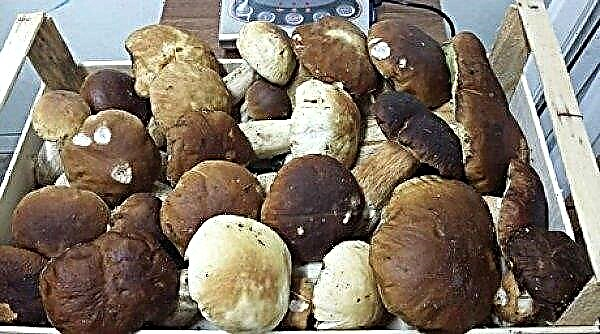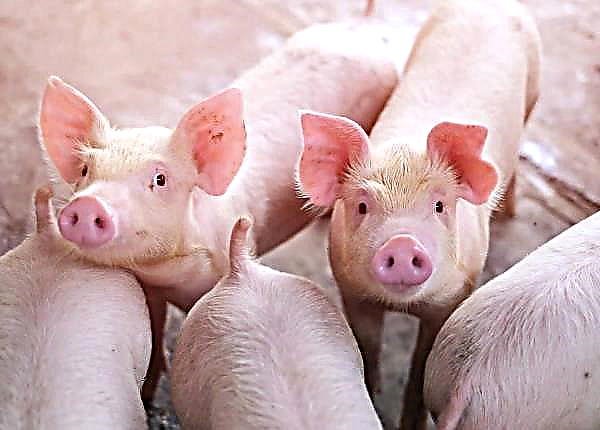The choice of breed of chickens for breeding is a very important stage in poultry farming. First you need to decide what kind of chicken you need - egg, meat or combination. The best choice, of course, would be meat and egg chicken. Its representative is an unusual breed - master gray.
History reference
Master gray chickens were bred in France about 20 years ago. There is still an assumption that the breed was bred in another country - Hungary. This breed is a hybrid, and got its name because of the unusual colors.
The creators of the master gray wanted to bring out a highly productive bird that does not require a lot of feed, as well as chicken that can be kept on a small farm. Hubbard breeds and monitors the cleanliness of the species.
Did you know? The breed has several more names: master gris (Master Gris) and the Hungarian giant.
General characteristics
Master gray belong to the meat-and-egg direction. The weight of an adult chicken can reach 3-4 kg, and a rooster up to 6.5 kg. The puberty of birds of this breed occurs early, at the age of 3 months. Within 1 year, the chicken is able, with proper nutrition and care, to lay up to 300 eggs, which indicates its high egg production.
Many breeders of this breed praise the master gray meat, as it is very tasty, low-fat and very nutritious. The products of this breed are valued on the market, since the fat content of the meat is minimal, and the breast is great for baby food.
Appearance
Outwardly, master gray chickens are slightly different from other breeds. In the table below, the external characteristics of these birds are described in detail.
| Appearance | Birds have a strong muscular body that holds a considerable body weight |
| Head | Medium in size, with eyes, beak, comb, catkins |
| Crest | Medium Red |
| Beak | Small, yellow, slightly bent |
| Neck | Short, thin, slightly longer in males than in females |
| Chest | V-shaped, slightly convex |
| Stomach | Round, tight |
| Wings | Strong, medium length, roosters slightly down |
| Tail | Males are longer than females, slightly up |
| Paws | Well developed, strong, yellow |
| Plumage and color | Puffy feathers (white-gray color with light patches of black). The tips of the wings are usually dark. A dark strip is located on the neck. |
Temperament
By temperament, the master gray is more likely to be phlegmatic. They are quite calm, balanced, they can even be picked up. They are friendly to other birds and get along well with their brethren.
Advantages and disadvantages
The content of any breeds of chickens has both pros and cons. The master gray is no exception.
- Benefits of keeping these chickens:
- this breed is more durable than a color broiler;
- birds have strong immunity;
- can be kept in different climatic conditions, as birds are not afraid of heat or cold;
- unpretentious in care and feeding;
- have a balanced character and beautiful color.
- The disadvantages of the breed:
- offspring cannot be obtained at home;
- high cost of food.
Maintenance and care
Maintenance is the main stage in breeding birds. Representatives of the master gray breed do not require a special temperature environment for living. They quickly adapt to any climatic conditions. But, as for other birds, for keeping the master gray you will need to equip a chicken coop, a walking yard and other accessories for normal life.
Important! The master gray breed can be kept both in the floor room and in the cages. However, it was revealed that during cell breeding the volume of meat of these hens - Almost twice as large as with the floor.
Chicken house equipment
The room in which the chickens will be kept must be dry. The ideal temperature for keeping this breed is 15–20 ° С. The size of the chicken coop should be calculated based on the number of chickens that will be in it. For 1 square. m should accommodate no more than 2 hens. Total, if you contain 10 chickens, it will be enough to equip a place in 5 square meters. m
During the construction of the chicken coop, do not forget about the correct location of the windows. They must be placed in such a way that there are no drafts in the room. It is also necessary to build high-quality ventilation so that there is fresh air in the chicken coop, since dampness and humidity will badly affect the health of the livestock. In addition, bird droppings emit a harmful substance - ammonia, which adversely affects humans. The floor can be made of wood, it must be warm, so that in the cold season the birds do not freeze their paws. Also, do not forget about the litter. It needs to be built from several layers of straw or wooden shavings. It is often necessary to replace it so that mold, ticks and all kinds of parasites do not breed in it.
The floor can be made of wood, it must be warm, so that in the cold season the birds do not freeze their paws. Also, do not forget about the litter. It needs to be built from several layers of straw or wooden shavings. It is often necessary to replace it so that mold, ticks and all kinds of parasites do not breed in it.
The berth of the bird should be comfortable for her. As perches, beams from bars, which are convenient to clean, are best suited. If each chicken has its own place, then they will not dirty each other. There are several types of nests, but for a master gray, nests with a collection of eggs are suitable, which will reduce the time for their collection. It is recommended that the nest be built of wood and covered with straw.
Patio for walks
A walking yard is necessary for the free movement of chicken in its territory. Having the opportunity to graze in the fresh air, the bird receives many vitamins and nutrients that affect the productivity and livelihoods of birds.
Feeding troughs and drinking bowls
Efficient and timely nutrition is the key to the health and livelihoods of poultry. Poultry feeders can be used both plastic and wooden. For a master gray breed, a hopper feeder made of plywood is best suited. The advantage of these feeders is that they do not allow birds to spread food, and the herd has access to them. Also install several drinking bowls in the house. The herd should have free access to them. Drinking water should always be clean and fresh. For this, it is best to equip mechanical drinkers.
Also install several drinking bowls in the house. The herd should have free access to them. Drinking water should always be clean and fresh. For this, it is best to equip mechanical drinkers.
Shedding and egg laying break
It is impossible to predict the exact date of the start of molting, since it depends on what time of the year and in what conditions the chicks hatched. In the first year of life, the master gray amazes with its high egg production, after which it decreases to 30%. Despite this, chickens still continue to lay their eggs, and with proper feeding, supplementation of vitamins, fats and minerals in the diet can even slightly improve the rate of egg production.
How to feed an adult herd
Kuram master gray needs a balanced, timely and daily diet.
The following products are suitable for this breed:
- cereals (corn, grain, barley, etc.);
- vegetables;
- greenery;
- vitamins, feed;
- chalk, eggshell;
- wet feed.

Breeding chickens
Master gray chickens cannot be bred naturally. Since this breed is a hybrid, chickens do not inherit maternal traits, and in the second generation there is a division into the original breed. Therefore, breeding takes place directly in the incubator. At the same time, due to the rather high instinct of incubating these hens, it can be used to incubate eggs of other breeds.
Important! Additional feeding of birds of this breed do not require.
Egg incubation
In order to breed chicks in an incubator, you need to know some of the nuances of this process. The most important is the right eggs.
The incubation egg should be:
- large;
- not have various defects;
- not supercooled;
- the shell must be clean, without dirt.

There are 4 incubation periods:
- Lasts 1-7 days. The first day includes laying eggs, while setting the temperature of 37–38 ° C and humidity up to 60%. Within 7 days, you should not change the temperature, since the formation of the embryo. All that needs to be done during the week is to turn the egg over so that the embryo does not adhere to the wall of the shell and forms correctly. At the end of this period, ovoscopy is performed, with the help of which it is possible to see blood vessels and remove damaged eggs.
- It runs from the 8th to the 14th day. In the following days, it is necessary to reduce humidity and continue to turn the eggs.
- From the 15th to the 18th day. From the beginning of the 4th week, it is necessary to ventilate the incubator several times a day. This leads to a gradual decrease in temperature. Do not forget to turn the eggs at this time. During this period, the chick is trying to stretch its neck, so the poultry breeder will be able to hear the first sounds of the chicken.
- The period from the 19th to the 21st day. On the 19th day after laying it is necessary to set the temperature at 35–37 ° C, and at the same time increase the humidity to 70%.
Important! On the 21st day of incubation, chickens should appear. Chicks break a hole in their shells, turn counterclockwise and take off the shell.
After the birth of the chickens, it is imperative to determine whether they hatched healthy. Signs of a healthy chicken:
- soft umbilical cord;
- a tight stomach;
- strong paws;
- bright fluff;
- short beak;
- high activity of the chick.
Baby Care
For rapid development, chickens need proper care. In the 1st month of life, they should be in a dry, warm room with ventilation, but without drafts. m can accommodate 20 chickens. In the 1st month babies are given a lot of protein: boiled eggs, meat, fish. To improve digestion, you need to give greens. After 1 month of life, cereals (wheat or barley) are added to food. To simplify the feeding of small chicks, the master gray can be fed with ready-made compound feeds, but this type of food should be balanced.
To improve digestion, you need to give greens. After 1 month of life, cereals (wheat or barley) are added to food. To simplify the feeding of small chicks, the master gray can be fed with ready-made compound feeds, but this type of food should be balanced.
Feeding rules
The herd of the master gray breed requires increased attention to nutrition, since it requires a sufficient amount of feed for rapid growth and laying of eggs. Chickens of this breed are fed 3 times a day: in the morning and in the evening they give cereal feed, and in the afternoon - vegetables, herbs and bran. If the poultry farmer wants to feed the master gray like broilers, you need to add protein to your food. And to increase egg production, add vitamin E and calcium to your food. Shells and chalk are added to food for increased hardness of the eggshell. Also, during walks in the walking yard, animals can additionally feed on insects.
Master gray chickens are suitable for keeping poultry farmers who are determined to get a high result and are ready to feed birds of this breed. Beautiful coloring will definitely be a decoration of the farmer’s yard, and delicious meat and nutritious eggs will become the favorite food of the whole family.

